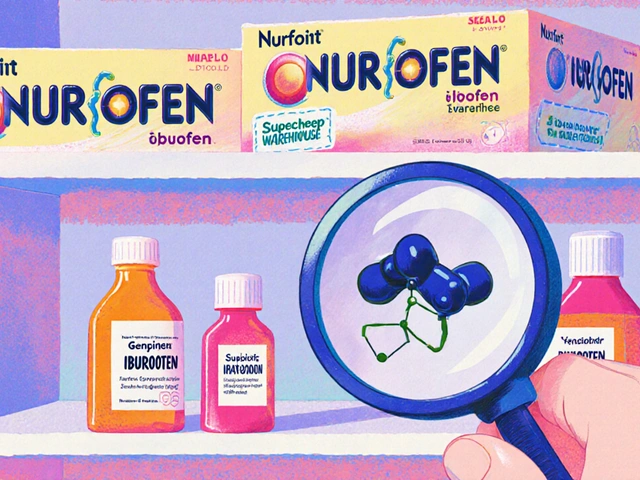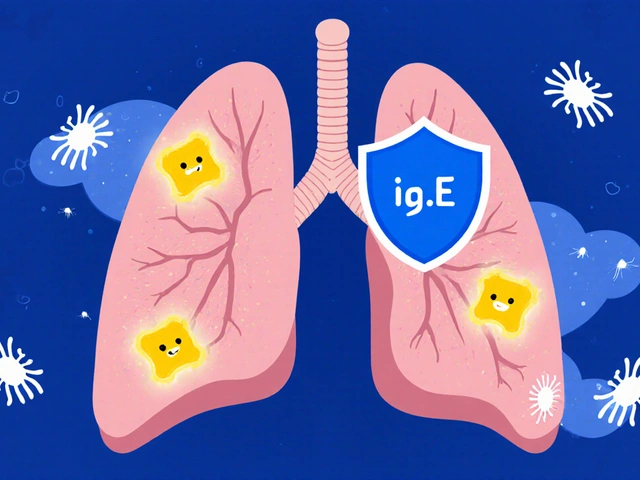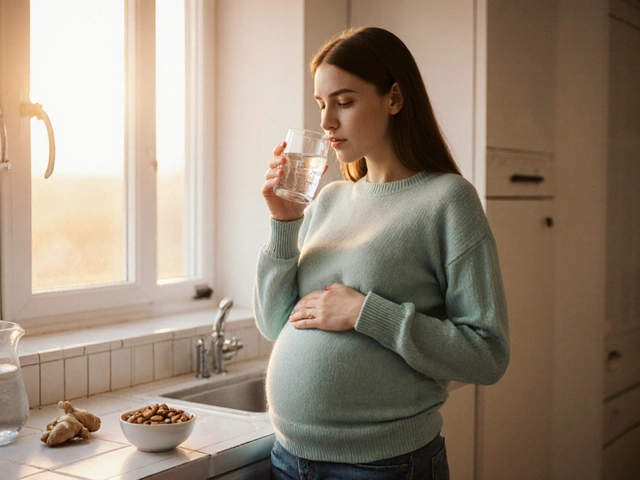Natural Melasma Remedy Selector
Your personalized recommendations will appear here after selecting options and clicking "Find My Best Remedies".
Top 5 Natural Remedies Explained
Vitamin C Serum
Ascorbic AcidPowerful antioxidant that inhibits melanin production. Best for brightening and evening skin tone.
Licorice Extract
GlabridinGentle skin lightener that reduces inflammation. Ideal for sensitive skin types.
Niacinamide
Vitamin B3Multi-tasking ingredient that improves skin barrier and inhibits melanosome transfer.
Aloe Vera
Aloin & PolysaccharidesSoothing gel with gentle exfoliating properties. Helps reduce irritation while promoting healing.
Turmeric & Green Tea
Curcumin & EGCGAnti-inflammatory duo that fights free radicals and protects against UV-induced melanin spikes.
Imagine waking up, looking in the mirror, and seeing those stubborn brown patches that seem to ignore every cream you’ve tried. Those spots are often melasma, a type of hyperpigmentation that loves to show up on the cheeks, forehead, and upper lip, especially when the skin is exposed to the sun.
Understanding Melasma
Melasma is a chronic skin condition characterized by brown or gray‑brown patches, typically caused by an overproduction of melanin. It tends to affect women more often, but anyone can develop it. The condition is linked to hormonal changes, genetics, and, most importantly, UV exposure. While prescription lasers and bleaching creams can work, many users look for gentler, natural alternatives that won’t irritate sensitive skin.
Why Choose Natural Remedies?
Natural ingredients often contain antioxidants, anti‑inflammatory compounds, and mild exfoliants that gently lighten pigment without the harsh side effects of strong chemicals. They’re also generally more affordable and easier to find in local supermarkets or health stores, making daily use realistic for most people.
1. Vitamin C - Brightening Antioxidant
Vitamin C (ascorbic acid) is a powerful antioxidant that interferes with melanin production by inhibiting the enzyme tyrosinase. To reap its benefits, look for serums containing 10‑20% L‑ascorbic acid. Apply a few drops each morning after cleansing, followed by a broad‑spectrum sunscreen. Consistency is key; most users notice a gradual lightening after 4‑6 weeks.
2. Licorice Extract - Gentle Skin Lightener
Licorice Extract, rich in glabridin, blocks the activity of tyrosinase and reduces inflammation. Products with 2‑5% licorice root extract can be mixed into a night cream or used as a spot‑treatment. Because it’s less irritating than hydroquinone, it’s a favorite for sensitive skin types. Patch‑test on the inner arm before full‑face application.

3. Niacinamide - Multi‑Tasking Vitamin B3
Niacinamide (vitamin B3) works on multiple fronts: it strengthens the skin barrier, reduces redness, and inhibits melanosome transfer to skin cells. A 5% niacinamide serum used twice daily can improve overall skin tone while fading melasma spots. Pair it with a moisturizer to avoid the occasional “tight” feeling.
4. Aloe Vera - Soothing Gel with Lightening Properties
Aloe Vera contains aloin and polysaccharides that gently exfoliate and promote collagen synthesis. Apply fresh aloe gel directly after cleansing, leave it on for 15‑20 minutes, then rinse. For best results, use the gel twice a day for at least eight weeks; many users report a subtle brightening effect and reduced irritation.
5. Turmeric & Green Tea - Anti‑Inflammatory Duo
Turmeric (curcumin) and Green Tea Extract (EGCG) are both rich in antioxidants that fight free radicals and calm inflammation. Mix ½ teaspoon of turmeric powder with a teaspoon of honey and a few drops of green tea extract to create a mask. Apply for 10‑15 minutes, then rinse. Use this mask 2‑3 times a week; the curcumin helps fade dark spots, while EGCG protects against UV‑induced melanin spikes.
How to Combine These Remedies Safely
Mixing too many active ingredients at once can overwhelm the skin. Here’s a simple schedule:
- Morning: Cleanser → Vitamin C serum → Moisturizer → Broad‑spectrum sunscreen
- Evening: Cleanser → Licorice or Niacinamide serum (alternate nights) → Aloe Vera gel → Light moisturizer
- Twice weekly: Turmeric‑Green Tea mask after cleansing, before night moisturizers.
Never skip sunscreen. Even the most natural routine can be undone by UV exposure, which reignites melanin production. Look for SPF30 or higher, applied 15 minutes before stepping outside.

Quick Checklist for Natural Melasma Treatment
- Identify your skin type - oily, dry, or combination.
- Start with one new ingredient at a time; give it 2‑3 weeks before adding another.
- Perform a 48‑hour patch test for any new serum or extract.
- Use sunscreen daily, regardless of cloud cover.
- Track progress with photos taken under consistent lighting.
Comparison of the Top 5 Natural Remedies
| Remedy | Main Active Ingredient | Typical Concentration | How to Apply | Known Side Effects |
|---|---|---|---|---|
| Vitamin C Serum | Ascorbic Acid | 10‑20% | Morning, after cleansing | Temporary tingling, rare irritation |
| Licorice Extract | Glabridin | 2‑5% | Night, as serum or spot treatment | Minimal; possible mild redness |
| Niacinamide | Vitamin B3 | 5% | Morning & night, before moisturizer | Occasional flushing |
| Aloe Vera Gel | Aloin & Polysaccharides | Pure gel | Twice daily, after cleansing | Very low; allergic reactions rare |
| Turmeric & Green Tea Mask | Curcumin & EGCG | Turmeric 0.5g, Green tea extract 2‑3% | 2‑3×/week, 10‑15min | Staining (curcumin), temporary warmth |
When to See a Dermatologist
If you notice rapid spreading, itching, or the patches darken despite consistent natural care, it’s time to consult a professional. Prescription options like tranexamic acid or low‑fluence laser therapy can be combined with home remedies for faster results, but only under medical guidance.
Frequently Asked Questions
Can I use these natural remedies if I have sensitive skin?
Yes. Start with low‑concentration products like aloe vera or a 2% licorice extract, and always patch‑test. Gradually introduce stronger actives like vitamin C once your skin shows tolerance.
How long does it take to see results?
Most people notice a visible lightening after 4‑8 weeks of consistent use. Patience is crucial because melasma is a deep‑lying pigment issue.
Do I need to avoid makeup while treating melasma?
Makeup isn’t a problem as long as it’s non‑comedogenic and removed gently each night. Mineral‑based foundations with SPF can actually add extra protection.
Is sunscreen really necessary if I’m staying indoors most of the day?
Absolutely. UV rays penetrate windows, and indoor lighting can still trigger melanin production. A broad‑spectrum SPF30 applied every morning keeps the pigment from deepening.
Can I combine these natural remedies with prescription creams?
Yes, but only under a dermatologist’s guidance. Some prescription agents can sensitize skin, so you may need to stagger application times (e.g., prescription at night, natural serum in the morning).






Roger Bernat Escolà
8 October, 2025 . 13:45 PM
I can't believe melasma still ruins my selfies.
Allison Metzner
13 October, 2025 . 18:45 PM
They don't tell you that the so‑called "natural" remedies are just a marketing ploy pushed by big pharma to keep us buying expensive creams. Every ingredient listed has a hidden patent that guarantees they profit off our insecurities. It's funny how they wrap it in buzzwords like "antioxidant" and "anti‑inflammatory" to sound scientific. If you read the fine print you'll see that most studies are funded by the very companies selling the serums.
william smith
18 October, 2025 . 23:45 PM
Start with a low‑dose vitamin C serum (5‑10%) in the morning and always follow with SPF30; that combination gives the best gradual brightening.
Timothy Javins
24 October, 2025 . 04:45 AM
Actually, even a low‑dose vitamin C can cause oxidation if your skin barrier is compromised. I recommend patch‑testing and using a simple niacinamide buffer first.
Kay Yang
29 October, 2025 . 08:45 AM
Nice summary, really helpful! :)
Rajesh Kumar Batham
3 November, 2025 . 13:45 PM
Glad you liked it! 🌱✨
Bill Gallagher
8 November, 2025 . 18:45 PM
When discussing melasma, it's imperative to consider not only the melanogenic pathway but also the interplay between UV‑induced reactive oxygen species and the inflammatory cascade that exacerbates pigment deposition. Vitamin C, for instance, functions as a reductant, scavenging free radicals while simultaneously inhibiting tyrosinase activity, which is the rate‑limiting enzyme in melanin synthesis. Licorice extract's active component, glabridin, operates via competitive inhibition of the same enzyme, yet its additional anti‑inflammatory properties make it particularly suitable for sensitive dermal phenotypes. Niacinamide, on the other hand, enhances the ceramide‑mediated barrier function, thereby reducing transepidermal water loss and indirectly limiting pigmentary irregularities. Aloe vera contributes polysaccharides that promote gentle exfoliation, allowing for more uniform distribution of melanin granules across the epidermis. The turmeric‑green tea combination delivers curcumin and epigallocatechin gallate, both of which modulate NF‑κB signaling, a pivotal transcription factor in inflammation. Chronologically, an optimal regimen would layer antioxidant serums in the morning, barrier‑supporting agents in the evening, and reserve the more aggressive masks for bi‑weekly use. Consistency, coupled with diligent photoprotection, remains the cornerstone of any successful melasma management plan.
Rajashree Varma
13 November, 2025 . 23:45 PM
These natural fixers really can make a difference if you stay patient and stick to the routine. Remember to patch‑test before you dive in and keep your sunscreen on at all times. Over time you’ll see the dark spots fade and your skin glow brighter.
Anshuman Pandey
19 November, 2025 . 04:45 AM
Melasma, in its stubborn persistence, mirrors the way unresolved emotions linger beneath our conscious mind. By turning to nature's pharmacy, we acknowledge that healing can be both external and internal. Vitamin C, a bright spark of citrus, reminds us that illumination often starts with a small dose of optimism. Licorice, rooted in ancient trade routes, teaches patience as its gentle lightening unfolds over weeks. Niacinamide, the quiet diplomat, balances inflammation and barrier function like a mediator in a heated debate. Aloe vera, the soothing gel of desert plants, offers comfort akin to a cool breeze after a scorching argument. Turmeric and green tea together form a philosophical duo, embodying the yin‑yang of fire and calm. When you apply these remedies, you perform a ritual that connects you to centuries of herbal wisdom. Yet rituals without intention are empty gestures; therefore, set a mindful purpose before each application. Consistency becomes the thread that weaves disparate ingredients into a cohesive narrative of change. Sun protection acts as the guardian, preventing the story from being rewritten by ultraviolet villains. Observing progress through consistent photographs is similar to keeping a journal of personal growth. If irritation appears, listen to your skin as you would heed a warning bell in a silent forest. Ultimately, the fading of dark patches reflects the gradual dissolution of inner doubts. Embrace the journey, for the true beauty lies not just in the cleared skin but in the patience cultivated along the way.
Thomas Malloy
24 November, 2025 . 09:45 AM
Good overview, thanks.
Sushma Gowda
29 November, 2025 . 14:45 PM
Great job breaking down the steps! I’d add that keeping a simple journal of your routine helps you stay accountable and spot any triggers early.
Angie Wallace
4 December, 2025 . 19:45 PM
Love the focus on natural ingredients and sunscreen
Doris Montgomery
10 December, 2025 . 00:45 AM
Honestly this reads like a generic blog copy paste. Nothing new here.
Nick Gulliver
15 December, 2025 . 05:45 AM
All this foreign fluff won’t work on real American skin – we need proven, US‑made formulas.